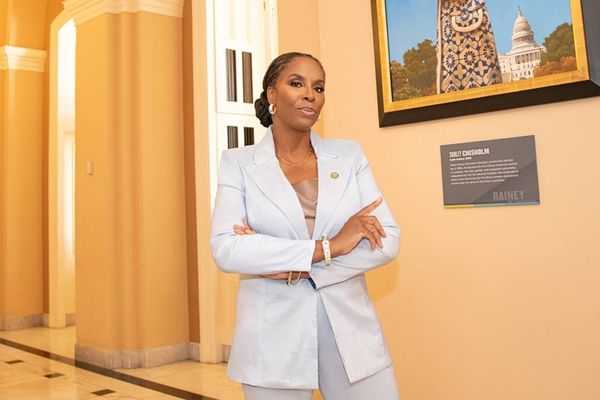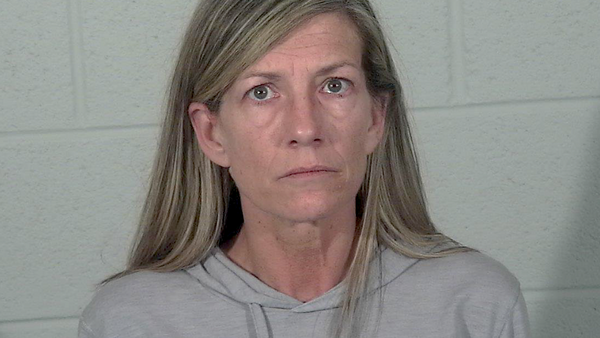
Laurena Henschke had been dead about 12 months when a letter from the Australian government turned up at her Adelaide home.
“Dear Mrs Henschke,” it read.
“You have moved up in the queue and I expect that you will be assigned a home care package in about three months. This package may be lower than the level you are approved for, but it lets you start to receive some home care services.”
The letter was a cruel frustration for her husband and carer, Dr Philip Henschke, who had sought, and been approved for, the highest level of home care for Laurena 18 months earlier.
“Laurena had two years of relentless decline with what they call a glioblastoma multiforme, which is the A-grade nasty, can’t-beat-it brain tumour,” he told the Guardian. “Life got rough in the last six to nine months.”
Henschke and his daughters worked together to care for her. But the demands became significantly more difficult in Laurena’s final stages.
Laurena’s balance required two people, one on each side, to get her on to a shower chair or on and off the toilet.
“You’ve got to have round-the-clock staffing, alarms, bed rails and all that sort of thing to cope. But we got by, we bought an electric bed and slept in the room with her, and we saw her into the next life, or off the planet, at home, which was a great blessing.”
The letter felt like a parting shot from a system the aged care royal commission would later describe as “unacceptably” delayed.
“What frustrated me was that having gone through probate, reporting her death through the state health authorities, cancelling her bank and superannuation accounts, it was quite clear that there was no intersection between them,” Henschke said.

Four years have passed since his ordeal.
But, with aged care firming as a key battleground before the election, has much changed in home care since? Has access to home care – critical in managing Australia’s ageing population and relieving the strain on residential care – improved since the royal commission last year told the government to act “urgently” to fix waiting lists?
Data suggests the kinds of waits Laurena and Philip Henschke faced are still significant, though improving.
After the royal commission, the Coalition announced 80,000 new home care packages worth more than $7bn, which are being delivered progressively until 2023.
About 30,000 packages have been released so far.
Government data shows the time people spend on the waiting list – the time between approval and the availability of care – is coming down gradually. The wait times for the kinds of packages Laurena Henschke was approved for has reduced to an average of six to nine months, down from 12 months or more in 2020.
But at the same time the sector has warned of a glaring problem, compromising its ability to deliver support services, even if they have been approved and funded by government.
It’s one faced right across aged care: staffing.
Earlier this month, the biggest home care provider in the country, myHomecare Group, sounded the alarm, with its chief executive Stuart Miller telling the Guardian its staff were at “breaking point”.
Miller estimated his staff turnover was somewhere near 30% in a single year – far better than the sector average, but still an extraordinary and disruptive rate.
“The staff turnover in this industry has been nothing short of abysmal,” he said.
“We’ve really found that a lot of the workers are leaving earlier certainly than they wanted and finishing their careers full stop just due to the stress of the last two years.”
Staffing problems, he said, meant less critical forms of support were being delayed or compromised.
“When you’ve got this level of turnover, it really upsets everything, from the clients to the economics of the business itself. It’s been a real struggle for us in the last two years.”
Industry peak group, Aged and Community Services Australia, delivered a similar warning. It said the sector had faced “serious workforce shortages and low wages” prior to the pandemic. The pressures of the last two years had made it ever more difficult.
“Attracting home care and other aged care workers has become even more difficult through the pressures of the past two years,” Acsa’s chief executive, Paul Sadler, said.
It’s an issue that was flagged in no uncertain terms by the royal commission. In its final report last year, the royal commission said it was “not confident that there is adequate capacity to supply all the services that should be funded under a needs-based system”.
“It will be necessary for supply-side capacity to be assessed and, where necessary, grown, so that aged care services are available when and where they are needed,” its report said. “This requires detailed planning.”
The planning, the royal commission said, would need to ensure “an adequate coverage of services to meet the population needs for major cities, rural, regional, and remote Australia”, as well as ensuring “the capacity and capability of new and existing providers to deliver more aged care services”.
The aged care minister, Richard Colbeck, said last week that the home care workforce had grown by 15,000 in the past five months, which would constitute an almost 15% surge in the workforce. The figures – drawn from data only available to the minister, according to his office – are at odds with the experience of industry.
Sean Rooney, chief executive of Leading Age Services Australia, an aged care sector peak group, said he had seen no figures reflecting such a significant boost to the home care workforce.
“Providers report to LASA that they continue to face severe staffing challenges due to the pandemic, so it is difficult to see where these workers are coming from,” Rooney told the Guardian.
Ahead of the this year’s budget, National Seniors Australia warned the government about precisely this point.
The home care packages were welcome, the group said in its budget submission. But they were not enough without an adequate workforce to deliver them.
It also provided several practical steps the government could take to unlock a new home care workforce, easily mobilised and often ready to work.
Could pension reform unlock workforce?
Home care is typically provided through a combination of informal support, provided by family, and paid care workers.
Yet the current pension arrangements effectively punish pensioners who want to take up caring work for family or loved ones.
National Seniors said the “punitive, penny -inching pension system” punished people for working additional hours. It is advocating for exempting employment income from the age pension income test for low-wealth pensioners working in aged and healthcare.
The group’s chief advocate, Ian Henschke, said the system was denying the sector a significant pool of workers for no good reason.
“You’ve got people who work in aged care and home care who want to work more, who won’t work more because they get penalised 50 cents in the dollar,” Henschke said.
“Why would anyone who is over 66.5 on a pension continue to work in aged care or home care? Yet they’re the very people who are often the most sympathetic to the older person, because they are about the age of the person’s daughter or son.”
The government has provided $338.5m to expand, train and upskill the aged care workforce.
The issue is personal for Henschke. Philip Henscke is his brother and Laurena was his sister-in-law.

The number of people dying while waiting for their approved home care package has reduced in recent years.
More than 50,000 older Australians have died since 2017-18. In the last six months of 2021, 3,802 people on the NPS died before receiving the home care package they had been approved for. More than 8,000 died in the 2020-21 financial year, and 10,563 died in 2019-20.
Labor’s Mark Butler described the figures as a “national disgrace” and a sign the system was still in crisis, despite the reduction.
“Most Australians want to age in their own home but the system that’s supposed to help them do that is in crisis,” he said.
“There are still tens of thousands of older Australians waiting for Home Care Packages.”
The opposition has sought to make aged care a central plank of its re-election pitch.
But the policies it has announced so far largely focus on residential care.
Colbeck says the opposition has “offered nothing on home care”.
“While Labor has offered nothing on home care – the Morrison Government is investing in aged care workforce initiatives that attract and retain a diverse range of workers with the right skills, knowledge and attributes to work and pursue a career in aged care,” a spokesperson said. “Initiatives include place-based approaches targeting local workers and national projects.”
For Philip Henschke, the idea of encouraging pensioners into home care work is a good one. He had a “fantastic” care worker who was a pensioner, but told him he would be unable to work more than one day a week.
“[Fixing that] would be a great help to fill the gap because we’re not going to get there,” he said. “We haven’t got the nurses, and what we really do need are these home care attendants.”







